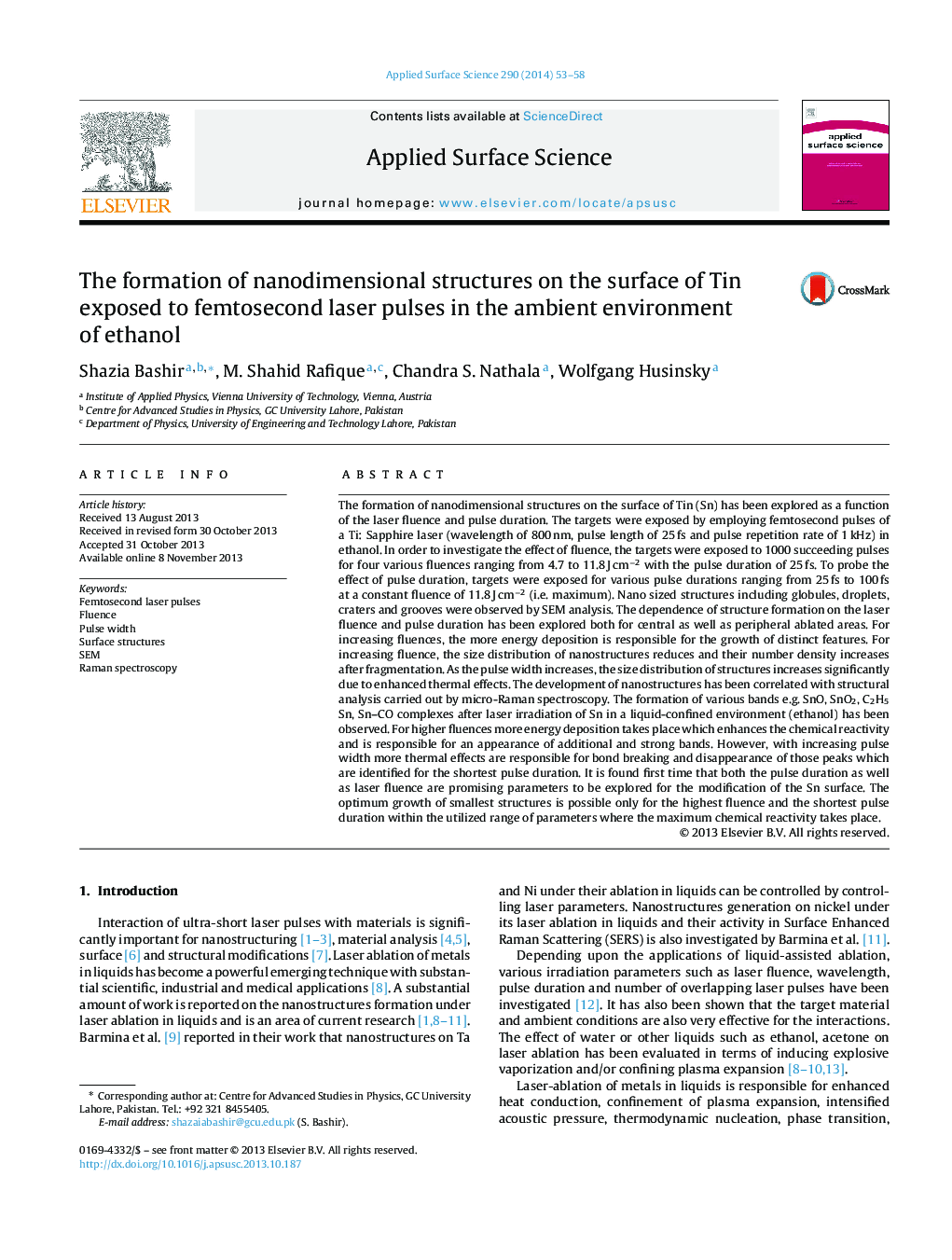| کد مقاله | کد نشریه | سال انتشار | مقاله انگلیسی | نسخه تمام متن |
|---|---|---|---|---|
| 5359882 | 1503674 | 2014 | 6 صفحه PDF | دانلود رایگان |
عنوان انگلیسی مقاله ISI
The formation of nanodimensional structures on the surface of Tin exposed to femtosecond laser pulses in the ambient environment of ethanol
ترجمه فارسی عنوان
تشکیل ساختارهای نانوموادی بر روی سطح قلع تحت تاثیر قرار دادن پالس های لیزر فموتوسن در محیط اتانول
دانلود مقاله + سفارش ترجمه
دانلود مقاله ISI انگلیسی
رایگان برای ایرانیان
کلمات کلیدی
موضوعات مرتبط
مهندسی و علوم پایه
شیمی
شیمی تئوریک و عملی
چکیده انگلیسی
The formation of nanodimensional structures on the surface of Tin (Sn) has been explored as a function of the laser fluence and pulse duration. The targets were exposed by employing femtosecond pulses of a Ti: Sapphire laser (wavelength of 800Â nm, pulse length of 25Â fs and pulse repetition rate of 1Â kHz) in ethanol. In order to investigate the effect of fluence, the targets were exposed to 1000 succeeding pulses for four various fluences ranging from 4.7 to 11.8Â JÂ cmâ2 with the pulse duration of 25Â fs. To probe the effect of pulse duration, targets were exposed for various pulse durations ranging from 25Â fs to 100Â fs at a constant fluence of 11.8Â JÂ cmâ2 (i.e. maximum). Nano sized structures including globules, droplets, craters and grooves were observed by SEM analysis. The dependence of structure formation on the laser fluence and pulse duration has been explored both for central as well as peripheral ablated areas. For increasing fluences, the more energy deposition is responsible for the growth of distinct features. For increasing fluence, the size distribution of nanostructures reduces and their number density increases after fragmentation. As the pulse width increases, the size distribution of structures increases significantly due to enhanced thermal effects. The development of nanostructures has been correlated with structural analysis carried out by micro-Raman spectroscopy. The formation of various bands e.g. SnO, SnO2, C2H5 Sn, Sn-CO complexes after laser irradiation of Sn in a liquid-confined environment (ethanol) has been observed. For higher fluences more energy deposition takes place which enhances the chemical reactivity and is responsible for an appearance of additional and strong bands. However, with increasing pulse width more thermal effects are responsible for bond breaking and disappearance of those peaks which are identified for the shortest pulse duration. It is found first time that both the pulse duration as well as laser fluence are promising parameters to be explored for the modification of the Sn surface. The optimum growth of smallest structures is possible only for the highest fluence and the shortest pulse duration within the utilized range of parameters where the maximum chemical reactivity takes place.
ناشر
Database: Elsevier - ScienceDirect (ساینس دایرکت)
Journal: Applied Surface Science - Volume 290, 30 January 2014, Pages 53-58
Journal: Applied Surface Science - Volume 290, 30 January 2014, Pages 53-58
نویسندگان
Shazia Bashir, M. Shahid Rafique, Chandra S. Nathala, Wolfgang Husinsky,
